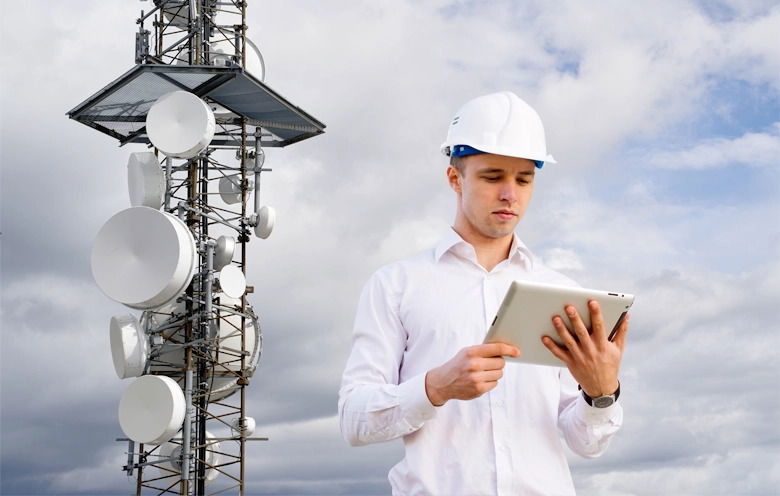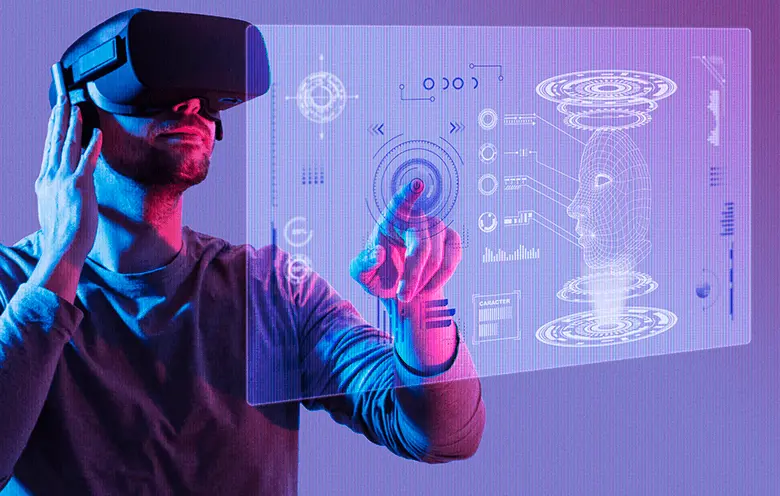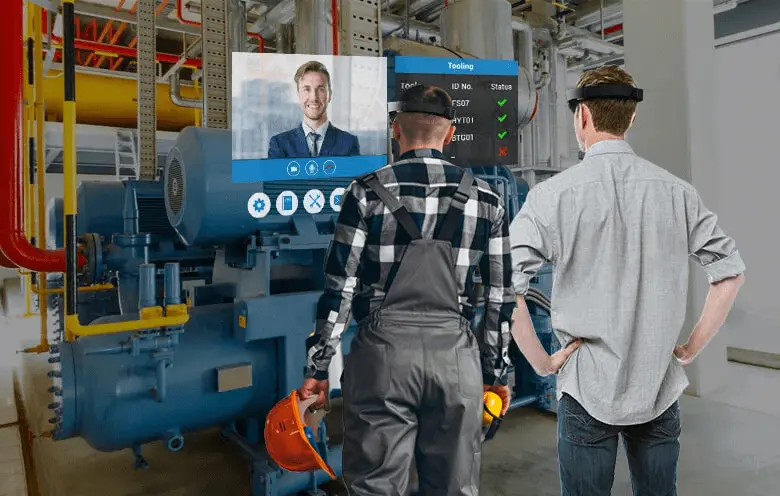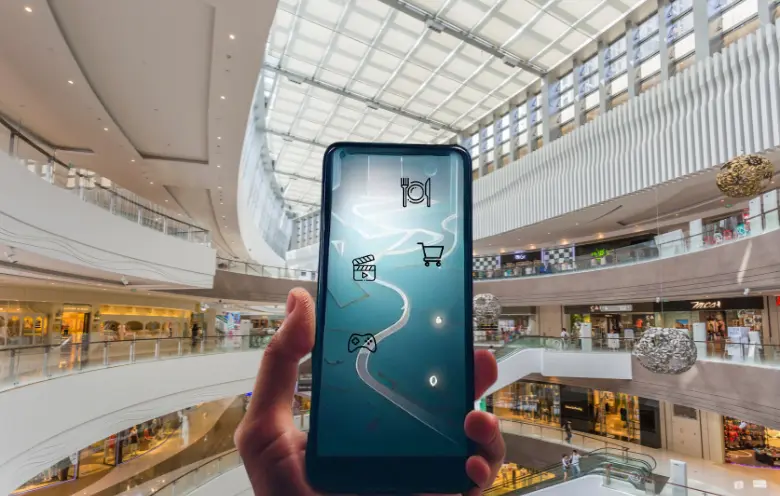The telecom industry is on the cusp of a technological revolution, thanks to 5G and augmented reality (AR) technologies. These advanced technologies have provided the industry with new opportunities, particularly in training and maintenance. With its ultra-fast network speed and low latency, 5G enables real-time information sharing and remote instruction. As a result, harnessing augmented reality in telecom operations can enhance service offerings.
A report by ABI Research states that the combination of AR and 5G will lead to a $300 billion revenue opportunity for the telecom industry by 2025.
Whether you work for a telecom company or a field service organization, you need augmented reality for training and maintaining equipment in remote locations. Also, AR provides field workers with visual data to do technical jobs faster.
According to a report by Ericsson, the telecom sector will benefit significantly from the global market for 5G-enabled industry digitalization, which is expected to reach USD 700 billion by 2030. The report notes that 5G-enabled technologies such as AR and VR (virtual reality) can improve training and maintenance step-by-step processes by providing remote assistance, reducing downtime, and increasing efficiency. – (Source: Ericsson)
Undoubtedly, AR remote assistance and 5G can transform the way telecom companies provide remote support and services to their customers. Let’s look at some use cases to see how AR remote assistance and 5G can help the telecom industry grow.
Use cases for 5G and AR remote assistance in the telecom industry
The telecom industry can reap multiple benefits from the integration of 5G and AR technology. Below are some notable instances where 5G and AR remote assistance prove useful in the telecom industry:
Remote training and maintenance:
Telecom companies can adopt 5G and AR to train and maintain their technicians. Your skilled technicians can use these technologies to gain immersive training experiences that help them understand what field service workers see in the real world.
You can use augmented reality remote assistance in training to improve work efficiency, cut costs, and improve safety. Additionally, it is beneficial to provide hands-free maintenance training with on-demand access to 3D models, schematics and visual instructions. This can reduce downtime and increase your organization’s first-time resolution times.
A report by Ericsson says that the use of AR and VR for remote assistance and training can reduce maintenance time by up to 50% and improve first-time fix rates by up to 30%. The report notes that 5G networks can support high-quality AR and VR applications, allowing for more immersive and realistic experiences.
Customer service:
Customer service is critical in the telecom industry for a positive customer experience. You can improve customer service by using AR remote assistance using 5G. This is done by allowing technicians to diagnose and resolve technical issues remotely, without physical presence.
Field services augmented reality can help field technicians diagnose and fix technical problems remotely by providing visual guidance. All in all, your organization can save time and resources while delivering a more convenient and efficient service to its consumers.
In a survey by Ericsson, 68% of consumers believe that AR can provide benefits for customer service, such as improved understanding of products and faster issue resolution.
Network maintenance and repair:
You can analyze data and traffic in real-time and your on-site workers can use AR to optimize their networks for continuous efficiency. Moreover, 5G and AR are the future of field service offering technicians with real-time monitoring and remote maintenance for telecom infrastructure.
Also, AR and 5G can help you quickly identify network faults and determine the most appropriate course of action. Further, your technician can give more informed recommendations while reducing time and effort.
Verizon case study shows that AR for network maintenance and repair can result in significant cost savings and improved productivity. The company used AR glasses and a 5G network to provide remote assistance to field technicians. This reduced the need for on-site visits and increased first-time fix rates. Verizon estimates it could save up to USD 12 million per year by using these technologies.
Infrastructure management:
With augmented reality for technicians, you can create digital twins of telecom infrastructure. These twins are virtual representations of the physical components of a network. This allows your technicians to monitor and manage network components remotely, which improves infrastructure maintenance.
In a survey by ABI Research, 60% of telecom operators believe AR can benefit infrastructure management. In addition, 47% believe that 5G can improve connectivity and data transfer for these applications. The survey notes that AR and 5G can enable real-time monitoring and predictive maintenance, improving telecom networks’ reliability and performance.
Sales and marketing:
5G and AR deliver personalized and targeted advertising to your customers. Your organization uses AR remote assistance to create engaging and interactive ads that capture attention. Your team can create interactive demos to showcase new products and services to potential customers using your sales and marketing team.
These are some ways that 5G and AR remote assistance can be used in the telecom industry. They allow for real-time guidance and remote support, reduce errors and downtime, and improve training effectiveness. To support this idea, let’s look at some real-life examples of how telecom companies use AR and 5G.
Practical applications for AR remote assistance in real-life scenarios
There are several real-world examples of AR remote assistance in the industrial sector. Here are a few:
1. AT&T –
AT&T has developed a field service augmented reality solution that is designed for industrial and enterprise settings. The headsets use 5G to deliver high-speed connectivity and low latency, enabling field workers to access data and instructions in real-time.
2. Orange –
Orange has developed a 5G-powered augmented reality application for the tourism industry. The application lets users explore historical sites and landmarks using AR overlays and provides information and recommendations for nearby attractions.
3. Telefonica –
Telefonica has developed a 5G-powered AR platform that lets brands create immersive and interactive experiences for their customers. The platform uses 5G to deliver high-quality graphics and low latency, enabling users to engage with AR content in real-time.
4. Verizon –
Verizon is a leading telecommunications company that has incorporated augmented reality for technicians to improve customer experience and support. Employees at the company improve internal operations while providing a more engaging, interactive, and efficient customer experience.
Let’s discuss some of the challenges you might encounter when implementing AR remote assistance and 5G technology. This is despite the advantages they provide to many large companies. Additionally, we will explore possible solutions to these challenges.
Challenges and solutions for implementing AR remote assistance
While this technology has many advantages, there are some challenges and considerations when implementing AR remote assistance with 5G. Here are some potential challenges and their solutions to keep in mind:
1. Technical barriers: When implementing AR remote assistance with 5G, it’s important to have AR headsets or mobile devices with immersive and interactive capabilities, as well as a reliable internet connection. Technical issues such as connectivity problems or device malfunctions can disrupt communication and render remote assistance ineffective. You may also face technical compatibility challenges such as integrating with existing systems and user adoption.
Solution: To ensure a successful AR remote assistance implementation, make sure the software and devices are reliable and user-friendly with regular maintenance and technical support. For technical barriers, work with technology providers to ensure the network infrastructure supports the required bandwidth and low latency for AR. Implement edge computing solutions to reduce latency and enable faster AR data processing.
2. Cost: Deploying AR remote assistance for technicians on field requires a large investment, which can be expensive. Some organizations can be hindered by AR device, software and training costs. Implementing AR remote assistance and 5G technology can be expensive for you because of the hardware, software, and infrastructure needed.
Solution: You can collaborate or partner with companies specialized in AR remote assistance and 5G implementation to overcome the cost challenge. This can help reduce the initial investment and allow for a gradual implementation. Additionally, exploring different financing options, such as leasing or financing programs, can also help make the cost more manageable.
3. Training and adoption: Implementing AR remote assistance with 5G can be challenging for job training and adoption. You may require investing in training remote and on-site technicians for technology proficiency, which can be expensive and time-consuming.
Technology may also require new infrastructure, adding to implementation complexity and cost. Some employees may resist change, particularly if they are accustomed to traditional methods of assistance. The lack of adoption can result in low utilization rates, which affect the technology’s ROI and success.
Solution: Developing comprehensive training programs that cater to both remote and on-site workers is important. These training programs should use e-learning tools and platforms to create engaging and interactive job training programs.
You can provide ongoing support and feedback through regular check-ins and performance evaluations to help workers improve their skills over time. Telecom companies need training to succeed in 5G and AR. This is done by ensuring workers have the necessary knowledge and skills to excel in their roles and drive business success.
4. Security and privacy concerns: AR remote assistance transmits confidential information over the internet. This could potentially expose users to security breaches and privacy violations if adequate precautions are not taken.
It is crucial to employ robust security measures and adhere to best practices to ensure sensitive data protection. Additionally, regular security audits and updates must be conducted to mitigate potential vulnerabilities.
Solution: To enhance operational efficiency and ensure secure AR remote assistance, your company must establish robust security measures, including encryption, two-factor authentication, and secure data storage. All your stakeholders must comprehend the security protocols. Organizations that proactively address these challenges are more likely to implement AR remote assistance effectively and improve their overall operations.
Elevate your telecom game with AR remote assistance
Overall, 5G connectivity with AR remote assistance outperforms traditional remote assistance methods in terms of efficiency, accuracy and safety. Telecom organizations can streamline field service management with augmented reality and 5G to reduce training time and expense. Partner with the best AR development company, if you want your field service technicians’ to improve operational effectiveness.



